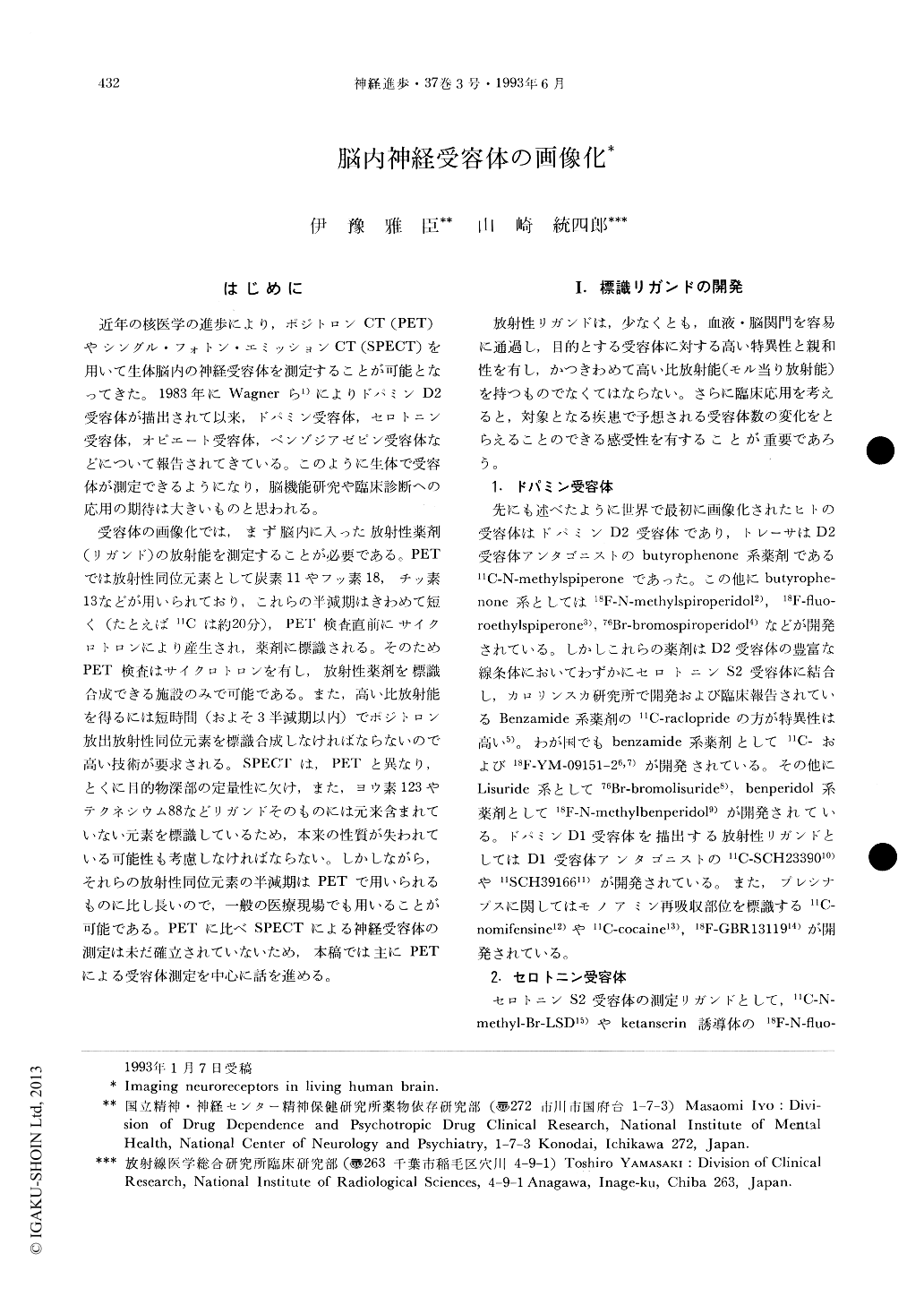Japanese
English
- 有料閲覧
- Abstract 文献概要
- 1ページ目 Look Inside
はじめに
近年の核医学の進歩により,ポジトロンCT(PET)やシングル・フォトン・エミッションCT(SPECT)を用いて生体脳内の神経受容体を測定することが可能となってきた。1983年にWagnerら1)によりドパミンD2受容体が描出されて以来,ドパミン受容体,セロトニン受容体,ナビエート受容体,ベンゾジアゼピン受容体などについて報告されてきている。このように生体で受容体が測定できるようになり,脳機能研究や臨床診断への応用の期待は大きいものと思われる。
受容体の画像化では,まず脳内に入った放射性薬剤(リガンド)の放射能を測定することが必要である。PETでは放射性同位元素として炭素11やフッ素18,チッ素13などが用いられており,これらの半減期はきわめて短く(たとえば11Cは約20分),PET検査直前にサイクロトロンにより産生され,薬剤に標識される。そのためPET検査はサイクロトロンを有し,放射性薬剤を標識合成できる施設のみで可能である。また,高い比放射能を得るには短時間(およそ3半減期以内)でポジトロン放出放射性同位元素を標識合成しなければならないので高い技術が要求される。SPECTは,PETと異なり,とくに目的物深部の定量性に欠け,また,ヨウ素123やテクネシウム88などリガンドそのものには元来含まれていない元素を標識しているため,本来の性質が失われている可能性も考慮しなければならない。しかしながら,それらの放射性同位元素の半減期はPETで用いられるものに比し長いので,一般の医療現場でも用いることが可能である。PETに比べSPECTによる神経受容体の測定は未だ確立されていないため,本稿では主にPETによる受容体測定を中心に話を進める。
It has been 10 years since the first image of receptors in the living human brain by PET was reported. A lot of radioligands for several kinds of neuroreceptors, such as dopamine receptors, serotonin receptors, opiate receptors, benzodiazepine receptors etc., have been developed and applied for human study. Some quantitative approaches have been considered, which allows us to analyze receptor images quantitatively, i.e., obtain Bmax and Kd, and to find age-related decrease in several receptors and neurochemical abnormalities in diseased brains in vivo. A decrease in benzodiazepine receptors and an increase in mu opiate receptors in epileptic focus have been revealed. The behavior of striatal dopamine D1 and D2 receptors has been suggested to be different in early Parkinson's disease. As to dopamine D2 receptors in drug naive schizophrenia, two groups reported inconsistent results. One showed an increase in schizophrenia, and the other showed no change compared to control subjects. This difference may result from the characteristics of different radioligands and analytic methods between the two groups, which indicates that there may be still methodological problems in receptor measurement by PET. However, estimations of receptor occupancy of neuroleptics have been possible and are contributing new ideas for clinical treatment of mental disorders.

Copyright © 1993, Igaku-Shoin Ltd. All rights reserved.


